While capturing attention is essential in today’s competitive digital space, it is not enough.
Marketers need to bring in real consideration for products and services.
The Google Ads Consideration Stage is a crucial period for potential customers actively evaluating their options by weighing pros and cons, moving closer to a decision.
This stage presents a unique opportunity to influence buying behavior, create brand recall, and encourage prospects to engage further.
This article will showcase effective ways to enhance the consideration stage in Google Ads, helping you turn interest into actionable intent.
If you’ve ever doubted how to outrank competitors and engage customers beyond mere awareness, this is where understanding the nuances of the consideration stage becomes vital.
Let’s dive into actionable insights and powerful tactics that will help you effectively guide potential customers through the consideration phase.
- Understanding the Consideration Stage in Google Ads
- Using Video Ads to Boost Consideration
- Remarketing to Improve Brand Recall
- Leveraging Display Ads for Enhanced Consideration
- Driving Consideration with Responsive Search Ads
- Conquering the Consideration Stage with Google Ads
- Google Ads Consideration Stage FAQs
Understanding the Consideration Stage in Google Ads
The consideration stage in Google Ads represents a pivotal point in the buyer journey.
At this stage, potential customers are aware of their needs or challenges and are actively researching possible solutions.
Unlike the awareness stage, where they are merely learning about brands and products, in the consideration stage, users actively compare options, read reviews, and seek detailed information to make informed decisions.
Google Ads equips marketers with tools to reach these audiences, but achieving success requires understanding what makes the consideration stage unique.

Understanding the Consideration Stage in the Buyer’s Journey
What is the Consideration Stage?
The consideration stage is when your audience weighs their options.
At this point, potential customers are likely researching various brands or solutions, including yours, to find the best fit for their needs.
Your goal here is to communicate how your product or service solves their problem more effectively than others.
Messaging at this level should emphasize benefits, competitive advantages, and unique features that set your offering apart.

Highlighting the Role of Consideration in the Consumer Decision Process
Importance of Consideration in the Buyer Journey
This stage is when prospective buyers begin to form preferences.
Focusing on this stage builds a bridge between brand awareness and decision-making.
By engaging effectively here, you can create a lasting impression that moves customers closer to a purchase.
Compelling brand messaging, reinforced by consistent Google Ads campaigns, teaches your audience why they should choose your brand over a competitor.
Consider how much research consumers now conduct before purchasing.
Recent studies indicate that most buyers compare multiple options before making a choice.
A well-planned Google Ads consideration stage strategy can ensure that your brand stays top of mind while potential customers are making comparisons.

Visualizing Key Metrics to Track Consideration Effectiveness in Google Ads
Key Metrics to Measure Consideration Effectiveness
Monitoring metrics is essential to understand how well your Google Ads campaigns perform in the consideration stage.
Key performance indicators (KPIs) such as click-through rate (CTR), engagement rate, time spent on landing pages, and return visits provide insights into how engaged potential customers are.
High engagement metrics indicate that users are genuinely interested in learning more about your brand and products, while low engagement may signal the need for campaign adjustments.
- Click-Through Rate (CTR): A higher CTR shows that your ad content resonates with the audience and attracts clicks, moving users closer to conversion.
- Average Session Duration: The time users spend on your website or landing page indicates their interest in your offering.
- Engagement Rate: Users returning to your site or watching more videos indicate a strong interest in your brand.
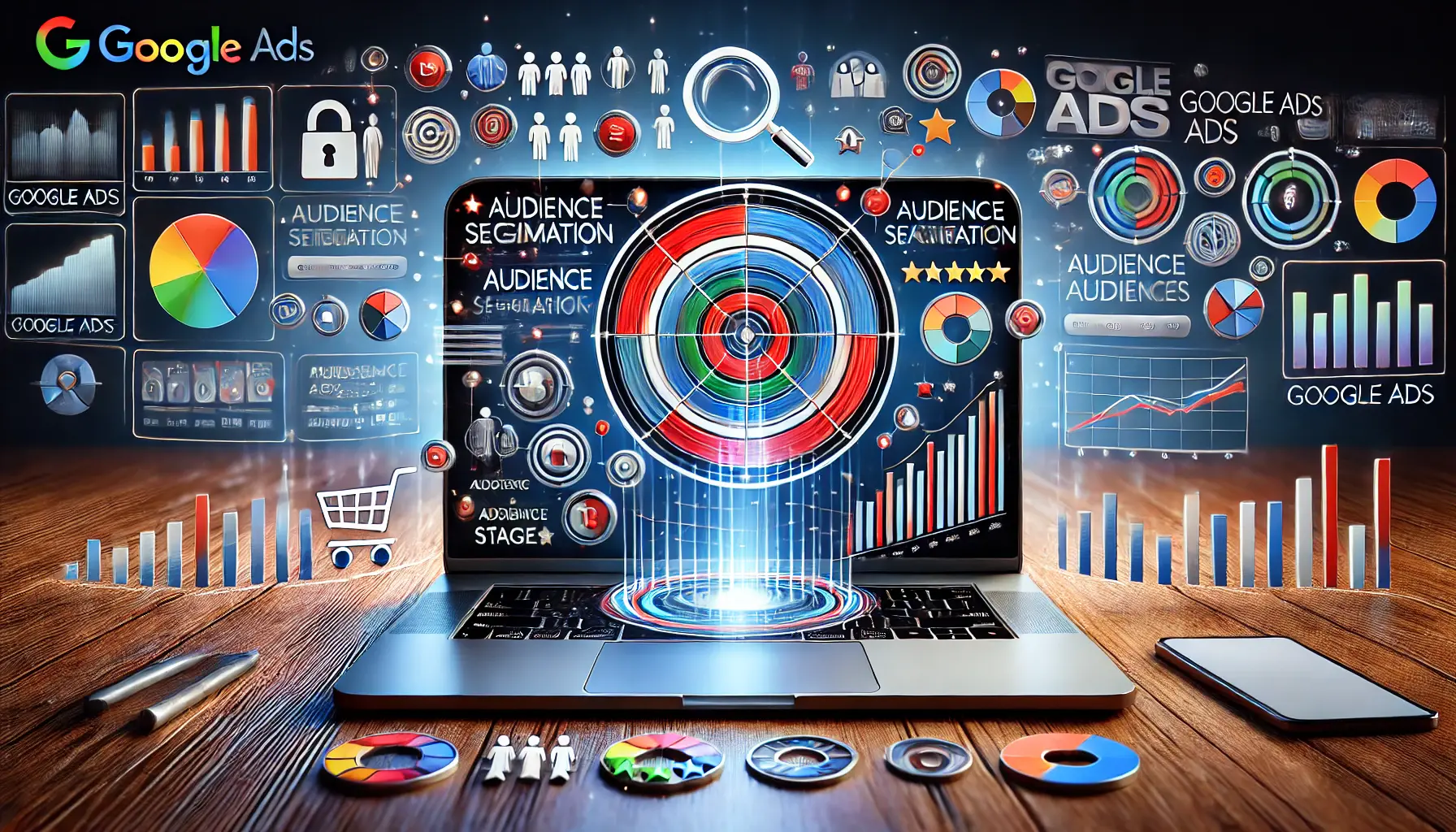
Visualizing the Challenges in Targeting Audiences During the Consideration Stage
Challenges in Targeting Consideration Stage Audiences
Targeting audiences in the consideration stage can be challenging, as users have varied preferences and are influenced by multiple factors.
They might compare prices, read customer reviews, or look for specific features.
Crafting messaging that resonates with these diverse interests requires a nuanced approach.
Additionally, you must balance educational content and persuasive tactics without being overly promotional.
To address these challenges, it’s essential to refine your targeting and continuously optimize your ads.
Google Ads offers features such as in-market audiencesGoogle Ads audience targeting option for people actively researching products similar to yours., affinity groupsGoogle Ads audience targeting option based on users' interests and long-term behavior patterns., and demographic targeting to help you tailor your approach for maximum impact in the consideration stage.
The consideration stage is where potential customers are seriously weighing their options. Make sure your brand stands out by highlighting unique advantages.
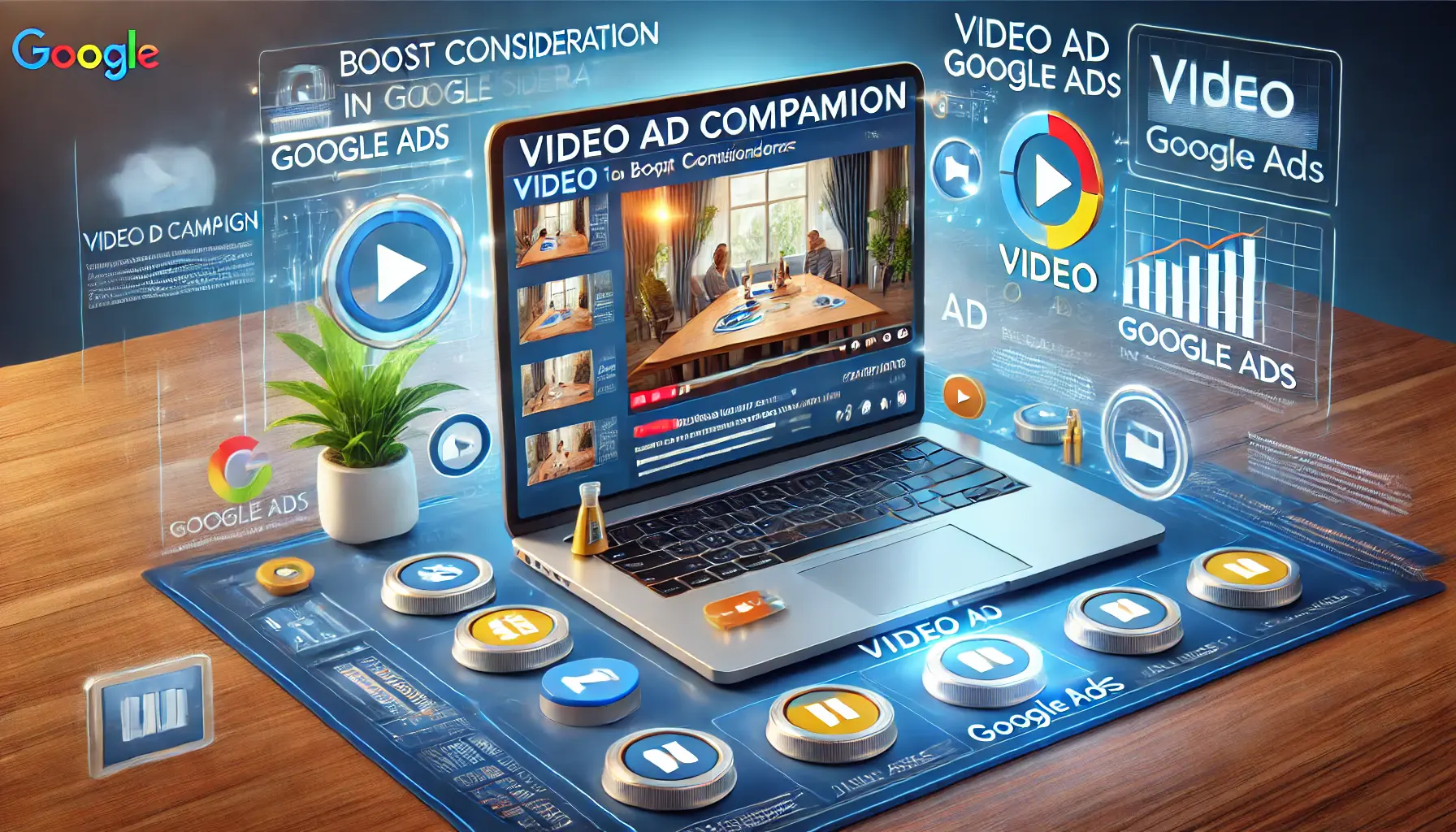
Using Video Ads Effectively to Boost Consideration in Google Ads
Using Video Ads to Boost Consideration
Video ads are a powerhouse in the consideration stage of Google Ads.
At this point, potential customers have moved beyond mere brand awareness and are actively considering their options.
Video can be an incredibly engaging and informative way to communicate with them.
With Google Ads, video allows you to go deeper into showcasing your product or service, demonstrating its benefits, and answering common customer questions in an engaging way that encourages further consideration.
The video format itself helps retain the viewer’s attention for longer periods and often makes the message more memorable compared to text.
Recent studies indicate that viewers retain 95% of a message when it’s presented in video format, compared to just 10% with text.
Video ads offer a unique chance to show your product in action, highlight key features, and connect emotionally with your audience.
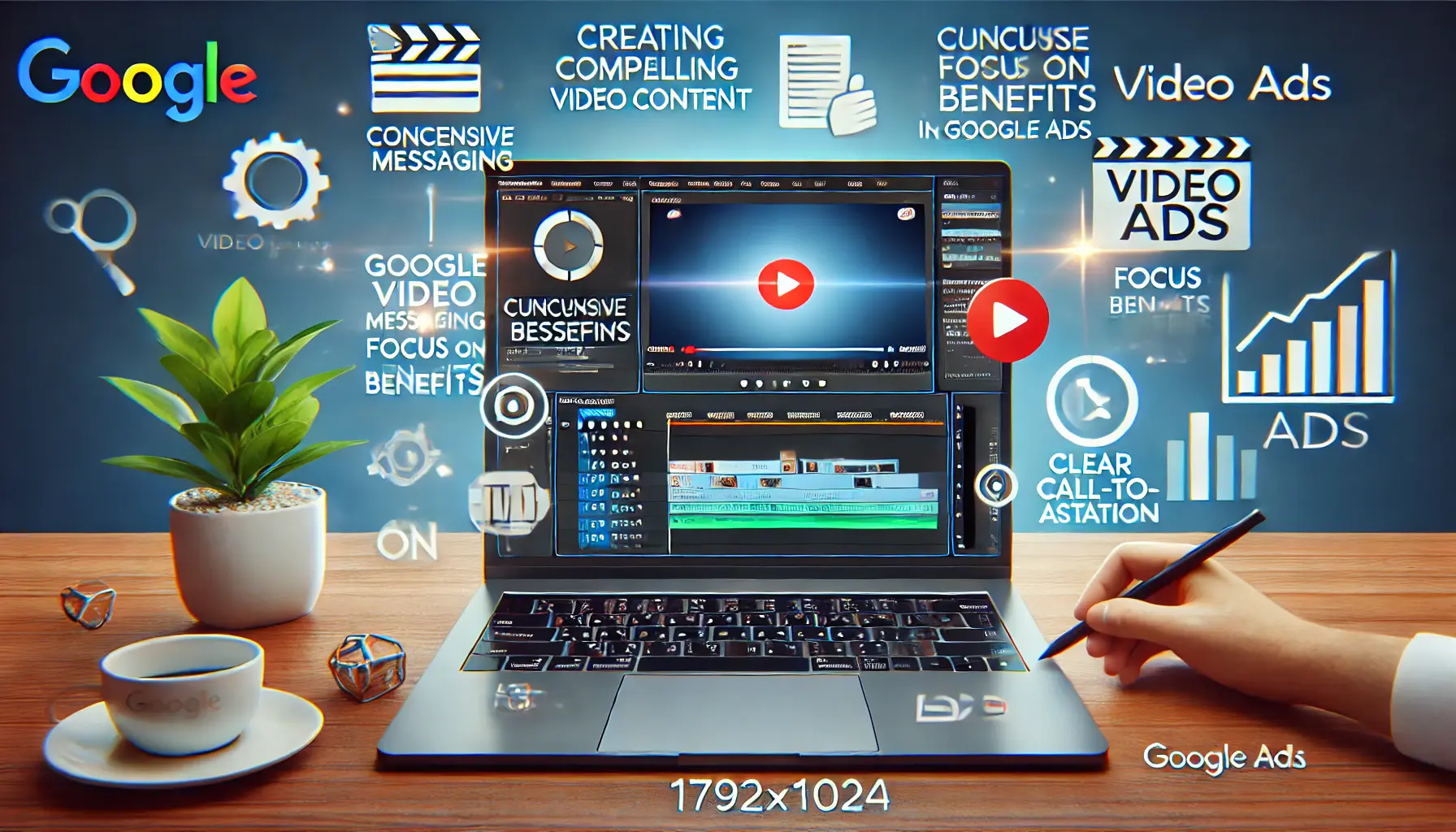
Best Practices for Creating Engaging Video Content in Google Ads
Best Practices for Compelling Video Content
Creating efficient video ads requires a strategic approach to content.
To make the biggest impact during the consideration stage, consider these best practices:
- Focus on Benefits: Highlight the main benefits of your product or service instead of simply listing features. This enables potential customers to see how the product will solve their problems.
- Keep it Concise: Short, impactful videos perform better since they match the viewer’s brief attention span. Aim for 15-30 seconds for initial ads, while reserving longer content for audiences who have shown interest.
- Include a Clear Call-to-Action: Guide viewers to take the next step, such as visiting your website, signing up for more information, or watching additional videos.
- Optimize for Mobile: Since a large portion of video content is consumed on mobile devices, ensure that your video is optimized for smaller screens and loads quickly.
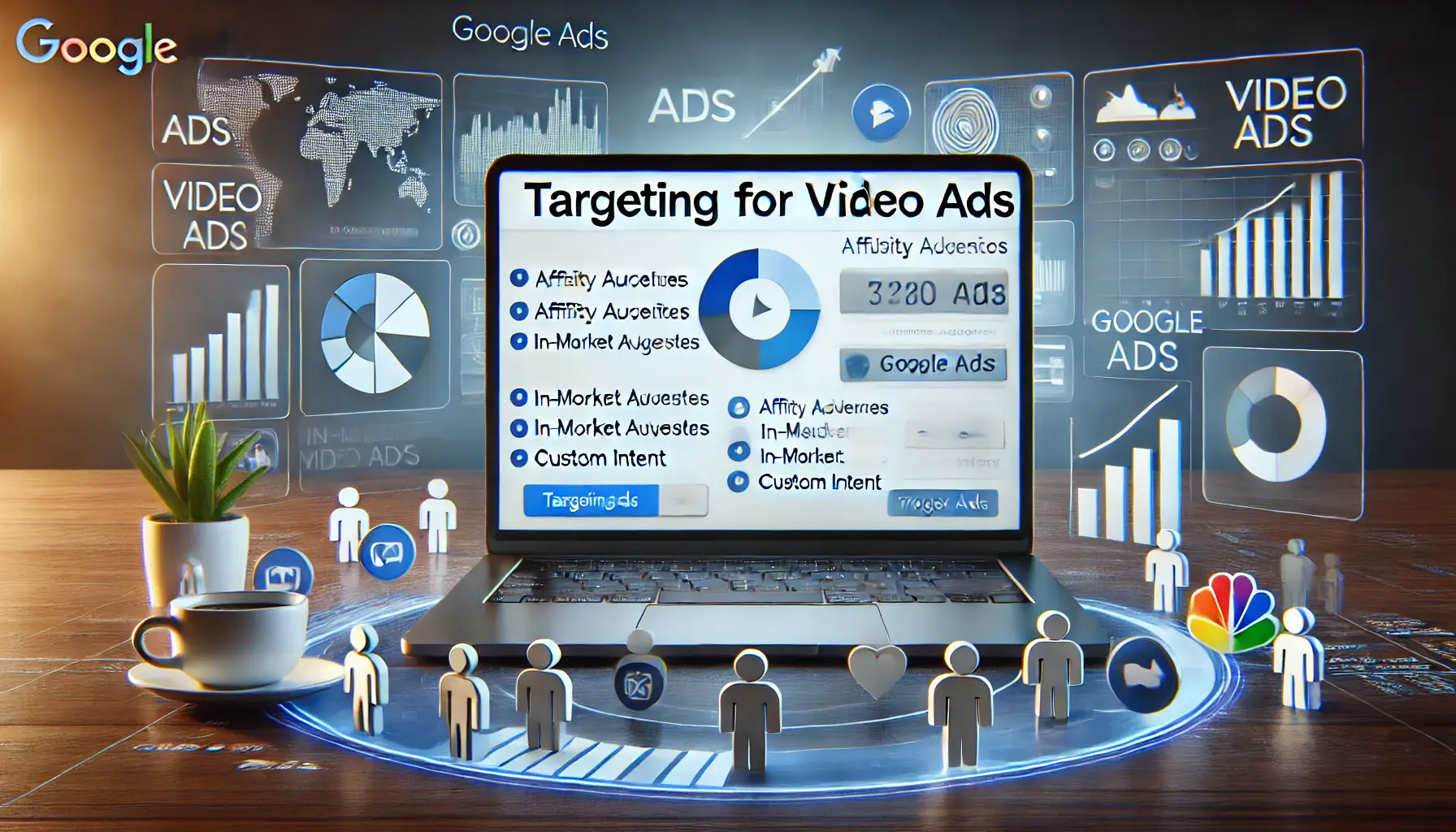
Exploring Targeting Options for Video Ads in Google Ads
Targeting Options for Video Ads in Google Ads
Google Ads offers a variety of targeting options to ensure your video ads reach the right audience during the consideration stage.
Consider using:
- Affinity Audiences: These audiences have shown a general interest in related topics, allowing you to reach people who could benefit from your product or service.
- In-Market Audiences: Target individuals who are actively researching and comparing products or services similar to yours, which indicates a higher purchase intent.
- Custom Intent Audiences: Build an audience based on specific keywords and URLs relevant to your business, allowing you to reach users searching for related products or services.
- Remarketing: Retarget users who have previously interacted with your brand to reinforce your message and remind them of your offerings.
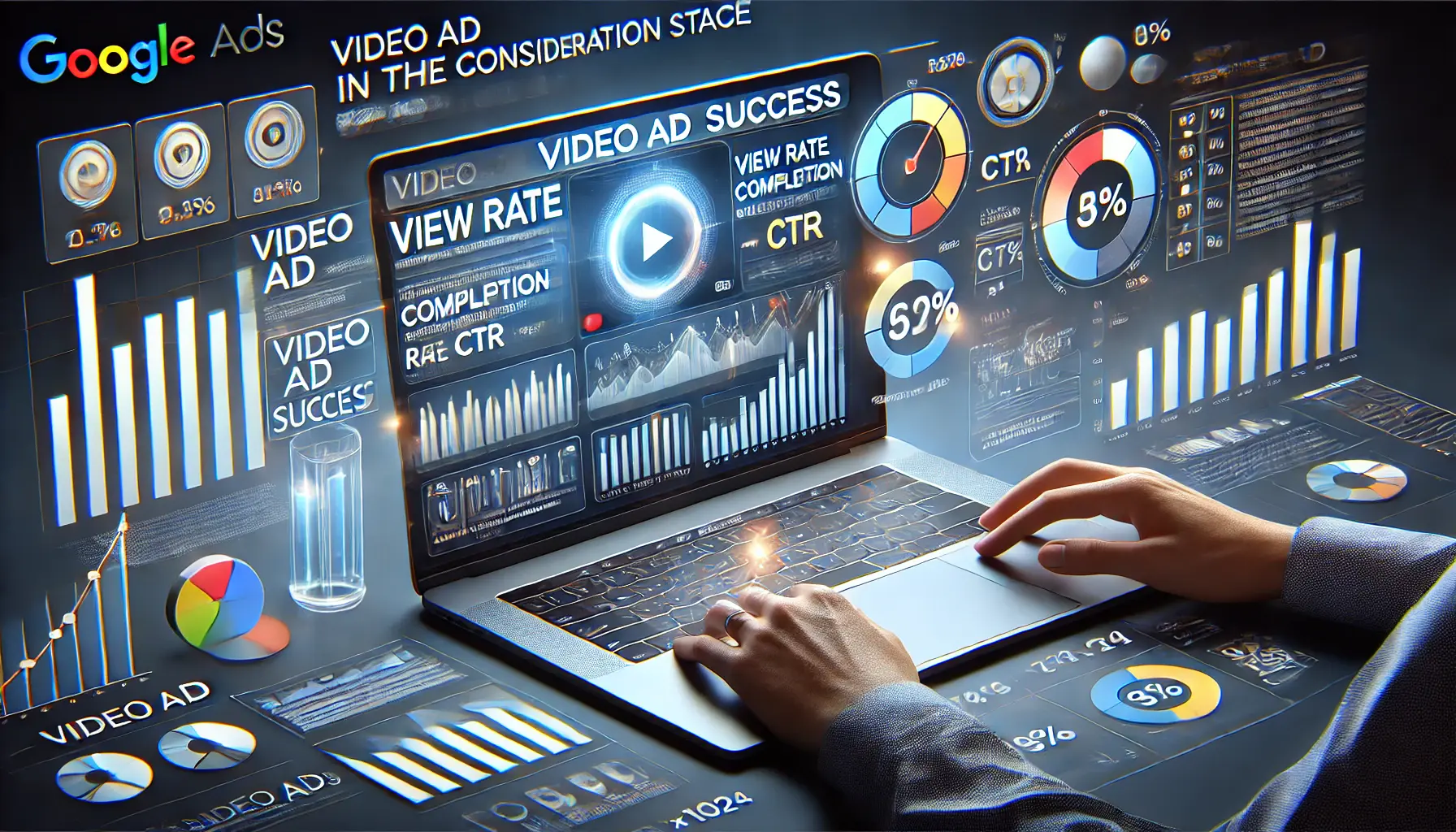
Measuring the Success of Video Ads During the Consideration Stage
Measuring Video Ad Success in the Consideration Stage
To effectively judge the success of your video ads in moving customers through the consideration stage, track metrics that indicate engagement and interest.
Key metrics include:
- View Rate: The percentage of viewers who watched your video ad versus those who clicked away. A high view-through rate indicates that your video content resonates with your audience.
- Completion Rate: The percentage of users who watched your video to the end. This metric helps you understand how engaging your video content is.
- Click-Through Rate (CTR): A high CTR suggests that viewers are interested in learning more, especially if your video includes a call-to-action.
- Watch Time: Track how long viewers watch your video to gauge overall interest. Longer watch times often reflect greater engagement and potential interest in your product.
By following these strategies, you can use video ads effectively to enhance the consideration stage in Google Ads, helping turn potential interest into genuine intent and, ultimately, conversions.
Video ads engage customers visually and emotionally, making them highly effective in the consideration stage to reinforce brand connection.

Using Remarketing Strategies to Reinforce Brand Recall
Remarketing to Improve Brand Recall
During the consideration stage of the buyer’s journey, prospects research your offerings against those of competitors.
Having effective remarketing in place through your Google Ads campaigns greatly improves brand recall and keeps your offering top-of-mind.
Remarketing is the process of re-engaging audiences who have already viewed or interacted with your website or mobile app, creating refined segments to serve relevant ads that encourage revisits and further consideration of your products or services.

Understanding the Basics of Remarketing in Google Ads
Introduction to Remarketing in Google Ads
Remarketing, also called retargeting, is one of the key features in Google Ads that allows you to show ads to people who have previously visited your website or used your mobile app.
By adding a few lines of code, known as a remarketing tag, on your website, you can track who has visited and build audiences based on their actions.
This ensures that your ads appear only in front of users who have already shown interest in your offerings, increasing the likelihood of conversionAn action taken by a user, such as a purchase or sign-up, that indicates a successful outcome from an ad..

Segmentation Strategies for Effective Remarketing in Google Ads
How to Segment Audiences for Effective Remarketing
Audience segmentation is essential for effective remarketing.
Here are some powerful segmentation strategies:
- Website Visitors: Target users who have visited your site, viewed specific pages, or performed actions such as viewing a product page or adding items to their cart.
- App Users: Engage with people who have used your mobile app, especially those who have completed any in-app actions.
- Customer Lists: Upload lists of existing customers or leads to create personalized remarketing campaigns.
- Similar Audiences: Expand your reach by targeting new users with interests and behaviors similar to those on your remarketing lists, who may likely be interested in your offerings.

Maximizing Remarketing Success with Various Ad Formats in Google Ads
Ad Formats that Maximize Remarketing Success
Choosing the appropriate ad formats is critical for the success of your remarketing campaigns.
Google Ads offers a range of formats to suit various objectives:
- Responsive Display Ads: Automatically adjust their size, appearance, and format to fit available ad spaces, providing optimal performance across devices.
- Dynamic Remarketing Ads: Show personalized content to users based on their past interactions with your site, such as specific products they viewed or added to their cart.
- Video Ads: Use engaging video content to tell a compelling story and communicate your message effectively.
- Text Ads: Simple but impactful, text ads can appear throughout the Google Display Network to reach your target audience.

Visualizing Successful Remarketing Campaigns and Their Impact
Examples of Successful Remarketing Campaigns
Several businesses have successfully used remarketing strategies to boost brand recall and drive conversions.
For example, a dynamic remarketing ad campaign by an e-commerce company, which showcased products previously viewed by users, resulted in a 30% increase in return visits and a 20% rise in sales.
Similarly, a travel agency utilized video remarketing ads to re-engage users who had searched for vacation packages, leading to a 25% increase in bookings.
By incorporating these remarketing tactics into your Google Ads campaigns, you can effectively remind consumers of your brand, re-engage past prospects, and guide them further down the buying cycle.
Remarketing is a powerful tool to re-engage users who have already shown interest in your brand, keeping you top-of-mind as they make decisions.
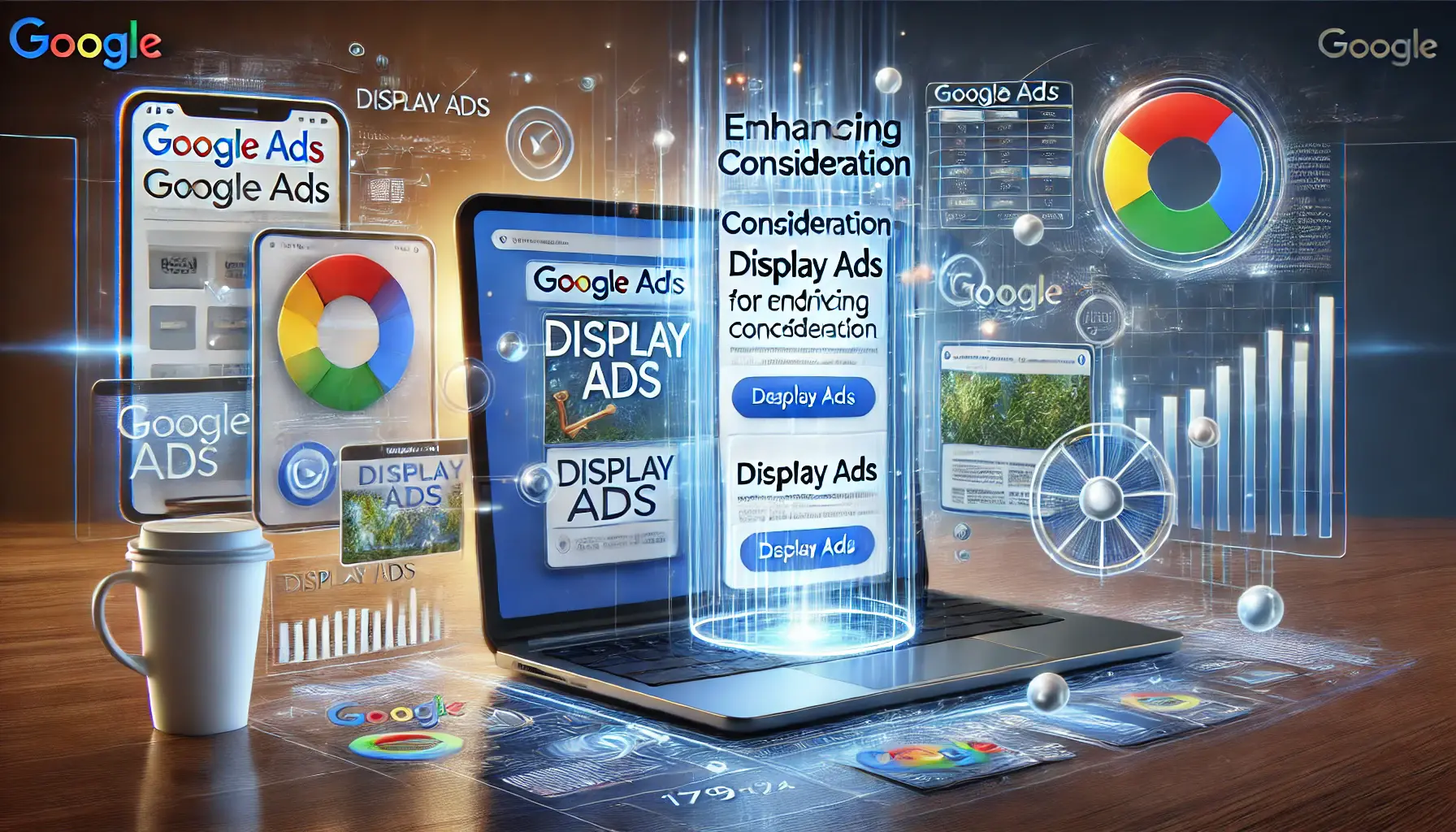
Leveraging Display Ads to Drive Consideration in Google Ads Campaigns
Leveraging Display Ads for Enhanced Consideration
The buyer is now at a stage in the consideration journey where active evaluation takes place before making a purchase decision.
Running display ads through your Google Ads campaigns can greatly lift consideration for your brand and factor into purchase decisions.
Display ads allow you to feature visually appealing content on a vast network of websites and apps, appearing when users are browsing online, watching videos, or using apps on their smartphones.
These ads can be in different forms—images, videos, and interactive formats—designed to capture users’ attention and effectively deliver your brand message.
By using display ads, you can reach a broad audience and keep your brand at the forefront of potential customers’ minds as they research their options.

Best Practices for Creating High-Quality and Effective Display Ads
Best Practices for Creating Effective Display Ads
To maximize the impact of your display ads during the consideration stage, remember the following best practices:
- Use High-Quality Visuals: Ensure your ads include high-resolution images or videos that reflect your brand and appeal to your target audience.
- Craft Compelling Headlines: Write simple, engaging headlines that highlight the unique benefits of your product or service to encourage users to click.
- Include a Strong Call-to-Action (CTA): Make it clear how users should proceed, whether it’s visiting your website, signing up for a newsletter, or exploring product details.
- Maintain Consistent Branding: Use consistent colors, fonts, and messaging across all your ads to reinforce brand recognition and build trust.
- Optimize for Mobile Devices: Design ads that are responsive and load quickly, as most users access content via smartphones and tablets.
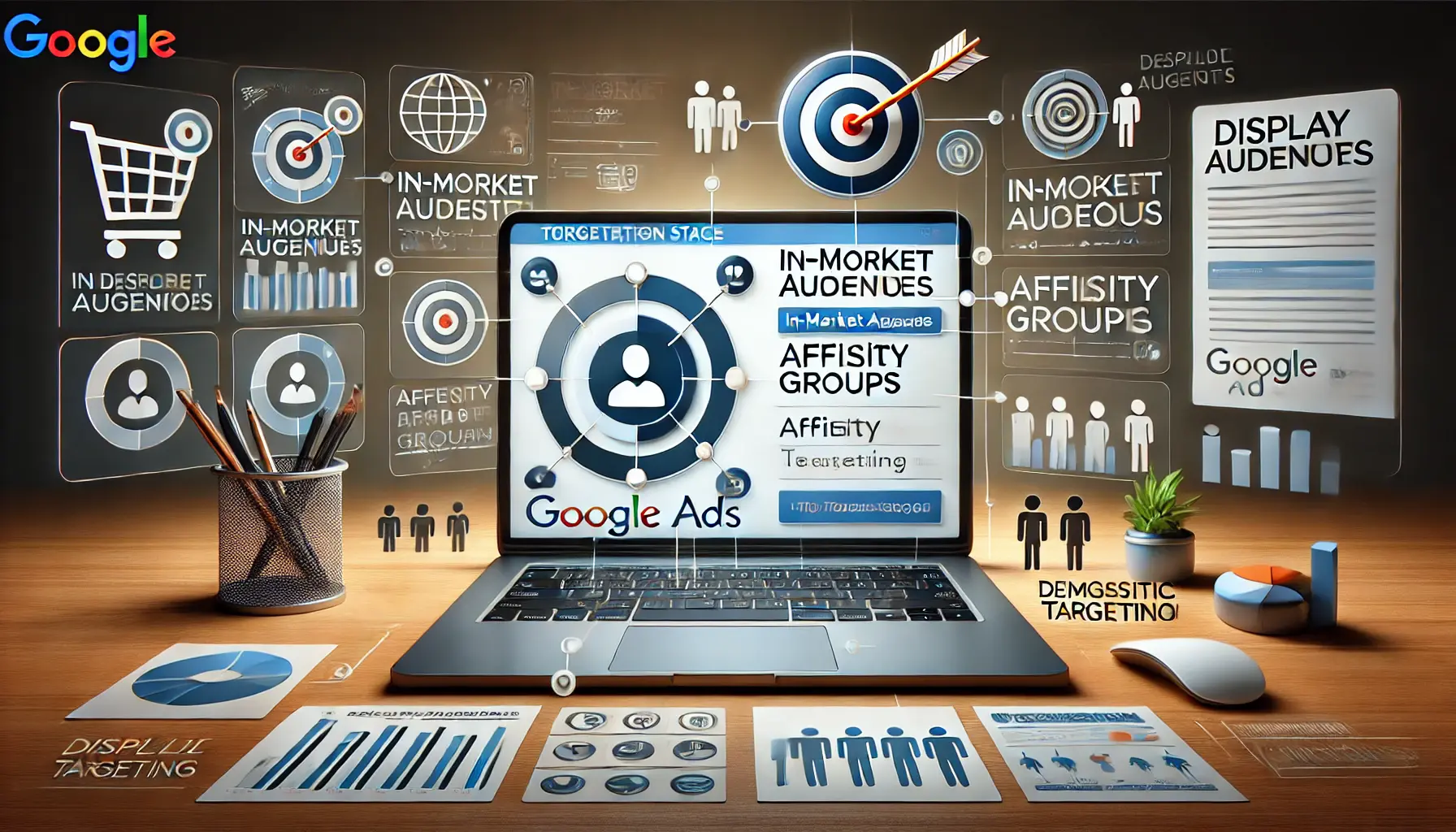
Targeting Options for Display Ads in the Consideration Stage of Google Ads
Targeting Options for Display Ads in the Consideration Stage
Effective targeting is crucial for reaching people in the consideration stage with display ads.
Google Ads offers the following targeting options:
- In-Market Audiences: Target users who are actively researching or comparing products or services similar to yours, indicating a higher likelihood of purchase.
- Custom Intent Audiences: Create audiences based on specific keywords and URLs related to your business to reach users showing interest in your offerings.
- Affinity Audiences: Reach users based on their interests and habits, allowing you to connect with those engaged in your niche.
- Remarketing: Re-engage users who have previously visited your website or interacted with your app, reminding them of your brand and encouraging them to return.

Measuring the Effectiveness of Display Ads in the Consideration Stage
Measuring the Success of Display Ads in the Consideration Stage
For the consideration stage, the success of your display ads can be measured by the following key performance indicators (KPIs):
- Click-Through Rate (CTR): A high CTR implies that your ad content resonates with the audience and prompts them to take action.
- Conversion Rate: This measures the percentage of users who completed a desired action, such as making a purchase or signing up for a newsletter, after clicking your ad.
- View-Through Conversions: Track users who may not have clicked on your ad but later visited your site and converted, reflecting the ad’s influence on their decision-making process.
- Engagement Metrics: Metrics like time spent on site, pages per session, and bounce rate indicate user interest and engagement after interacting with the ad.
By implementing these strategies and best practices, you can effectively use display ads in your Google Ads campaign to heighten consideration, influence prospective buyers, and drive them toward conversion.
Display ads help maintain your brand presence across platforms and encourage users to revisit your site as they compare options.
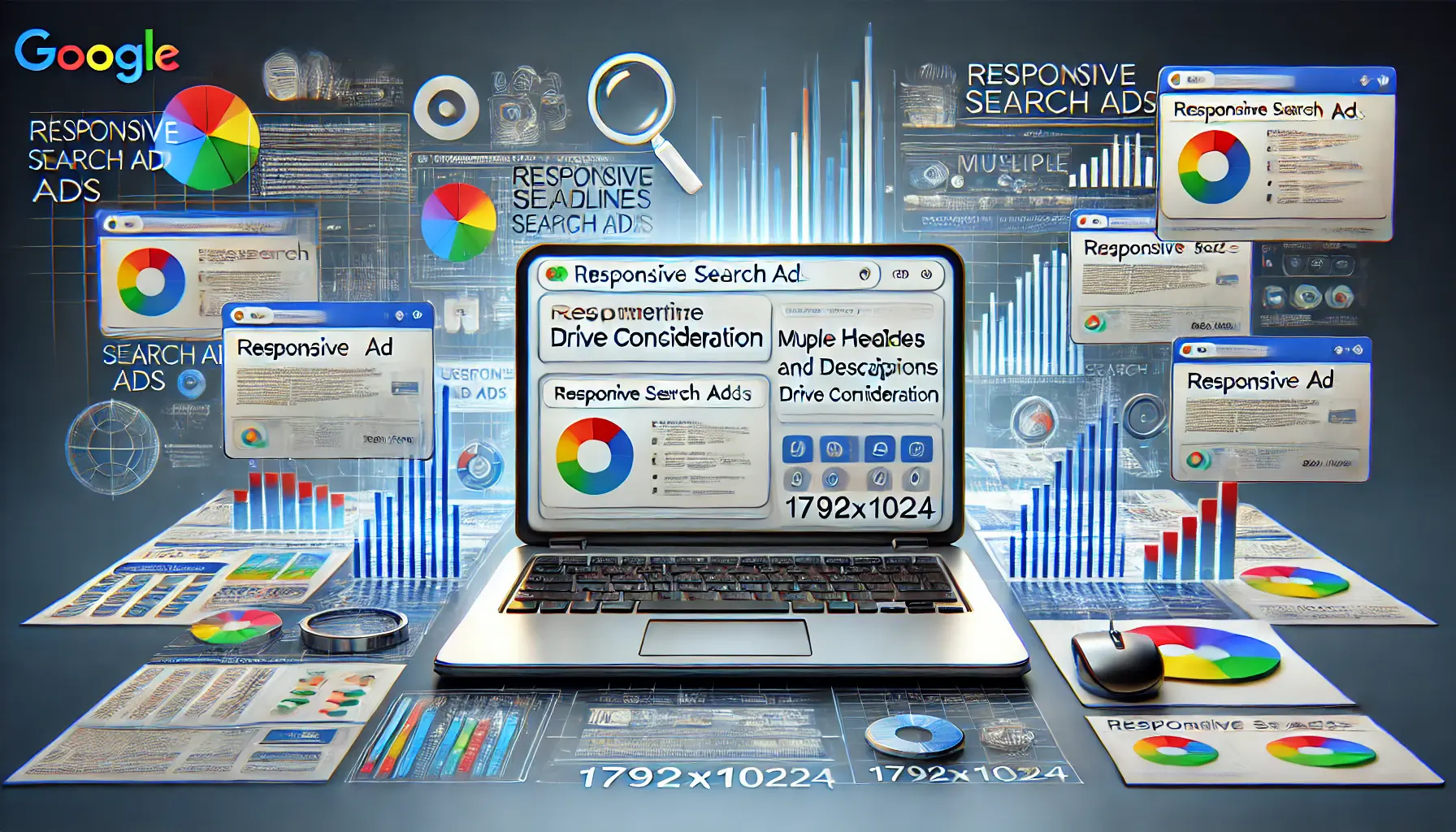
Driving Consideration with Responsive Search Ads in Google Ads
Driving Consideration with Responsive Search Ads
During the consideration stage, people are much more proactive in evaluating options before making a purchase decision.
Responsive Search Ads (RSAs) in Google Ads enable marketers to reach users in this state of mind with dynamic flexibility by delivering the best ad combinations to match users’ specific queries and preferences.
Implementing RSAs allows you to address the diverse needs of your audience, thereby enhancing consideration and driving them closer to conversion.
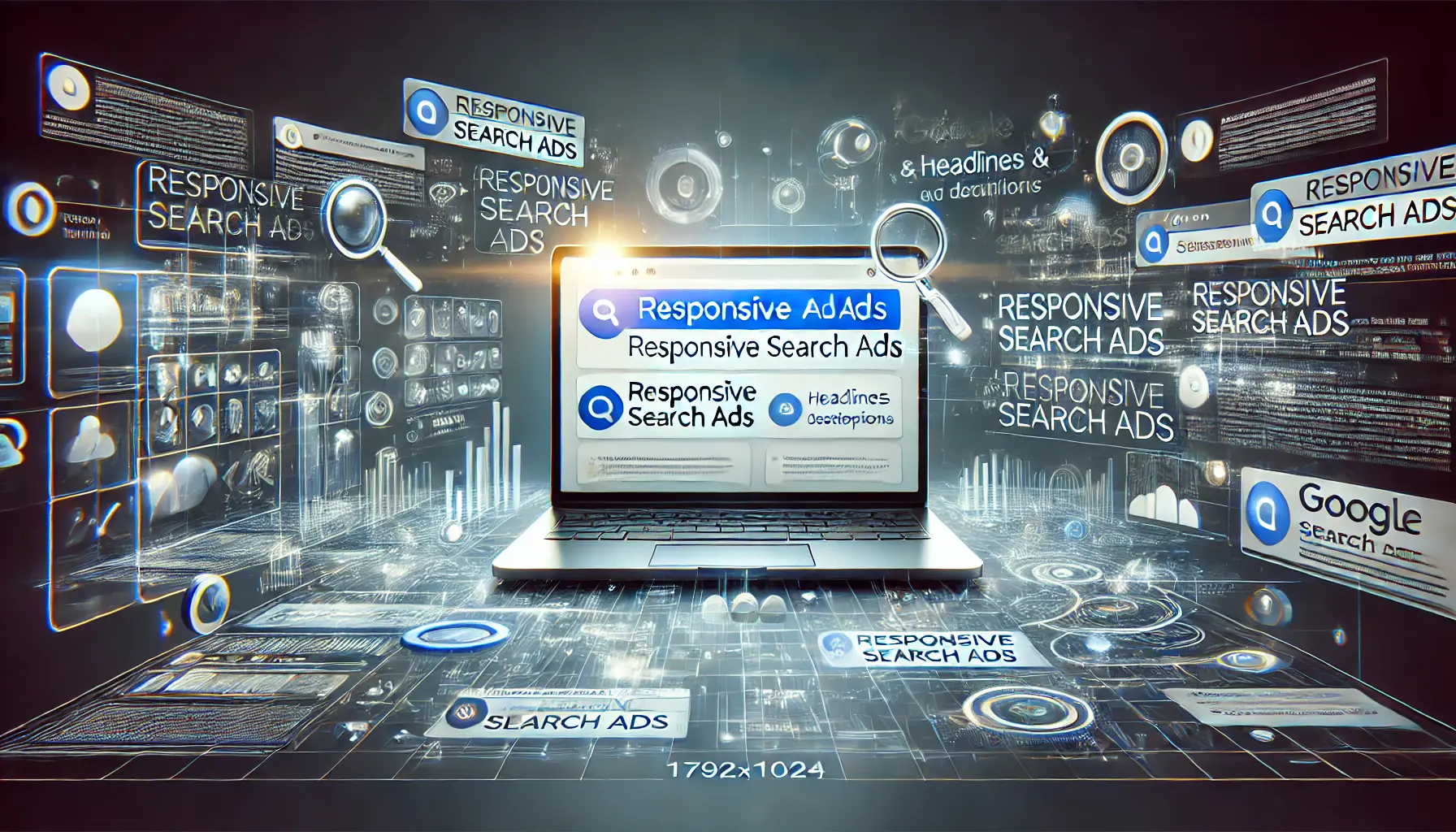
Understanding the Flexibility and Optimization of Responsive Search Ads
Understanding Responsive Search Ads
Responsive Search Ads allow advertisers to create multiple headlines and descriptions for a single ad.
Google Ads automatically tests different combinations to determine which performs best for various search queries.
This flexibility ensures your ads are closely aligned with what users are searching for, increasing the likelihood that they’ll engage with them during their consideration phase.
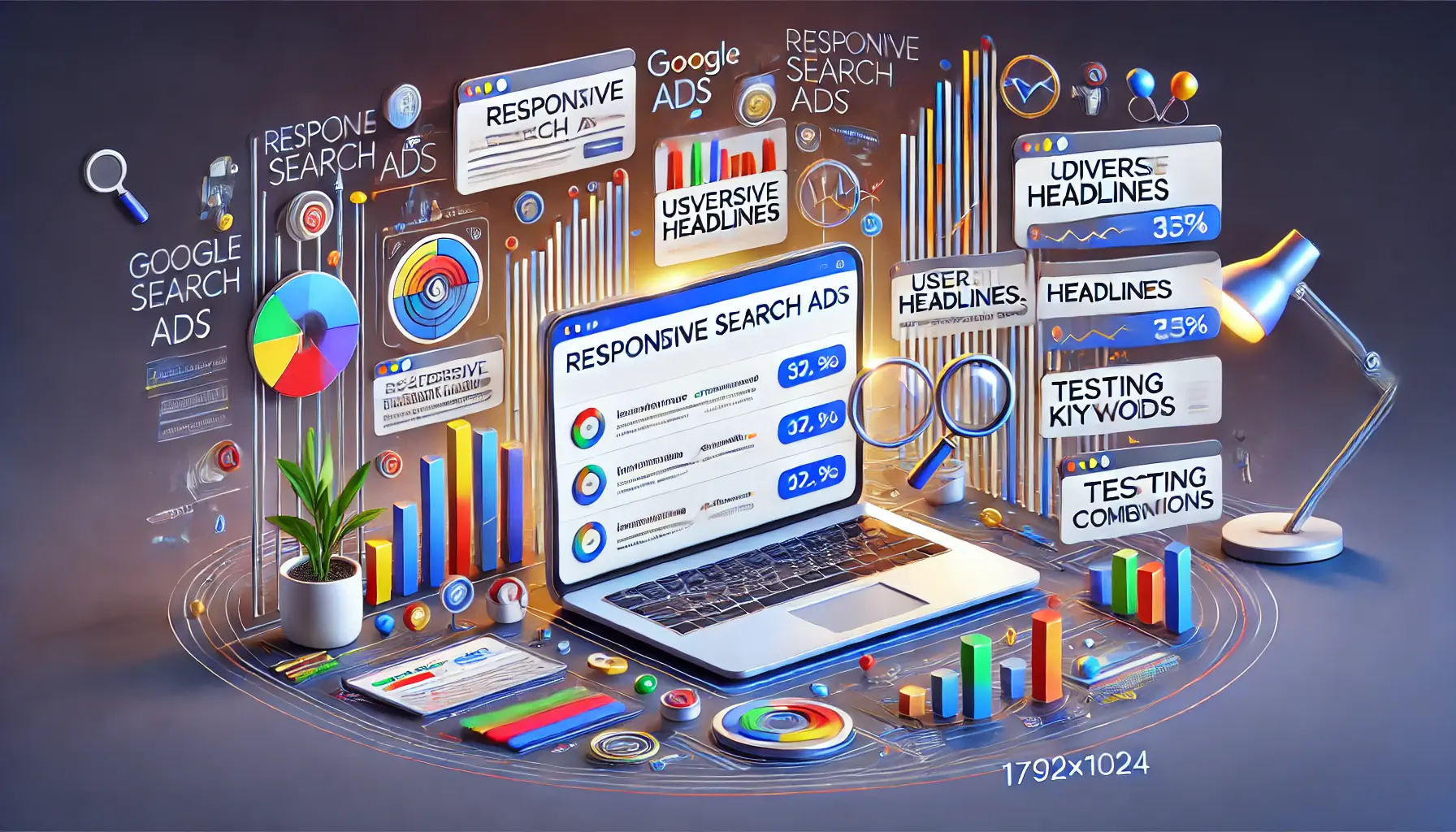
Optimizing Responsive Search Ads Using Best Practices for Effective Results
Best Practices for Creating Effective RSAs
To make the most out of your Responsive Search Ads during the consideration stage, follow these techniques:
- Use Diverse Headlines and Descriptions: Include different headlines and descriptions that highlight various aspects of your product or service, such as unique features, benefits, and offers. This diversity enables Google to compile combinations that can appeal to a broader audience.
- Incorporate Keywords Strategically: Include relevant keywords in headlines and descriptions to align your ad with user intent, improving relevance, quality scores, and ad performance.
- Use Pinning Sparingly: While pinning ensures that crucial information always appears, overusing this feature may limit the system’s ability to optimize combinations effectively.
- Test and Refine: Regularly review performance to identify high-performing combinations and continually improve your inputs. Continuous optimization helps keep your ads relevant and effective.

Highlighting the Benefits of Responsive Search Ads in the Consideration Stage
Benefits of RSAs in the Consideration Stage
Using Responsive Search Ads during the consideration stage offers several benefits:
- Higher Ad Relevance: RSAs adapt to match users’ search queries closely, making your ads more relevant and engaging.
- Increased Reach: The flexibility of RSAs allows your ads to compete in more auctions, increasing impressions and clicks.
- Enhanced Performance Analysis: Detailed performance data from different ad combinations provides insights to make informed decisions and adjust strategies as needed.
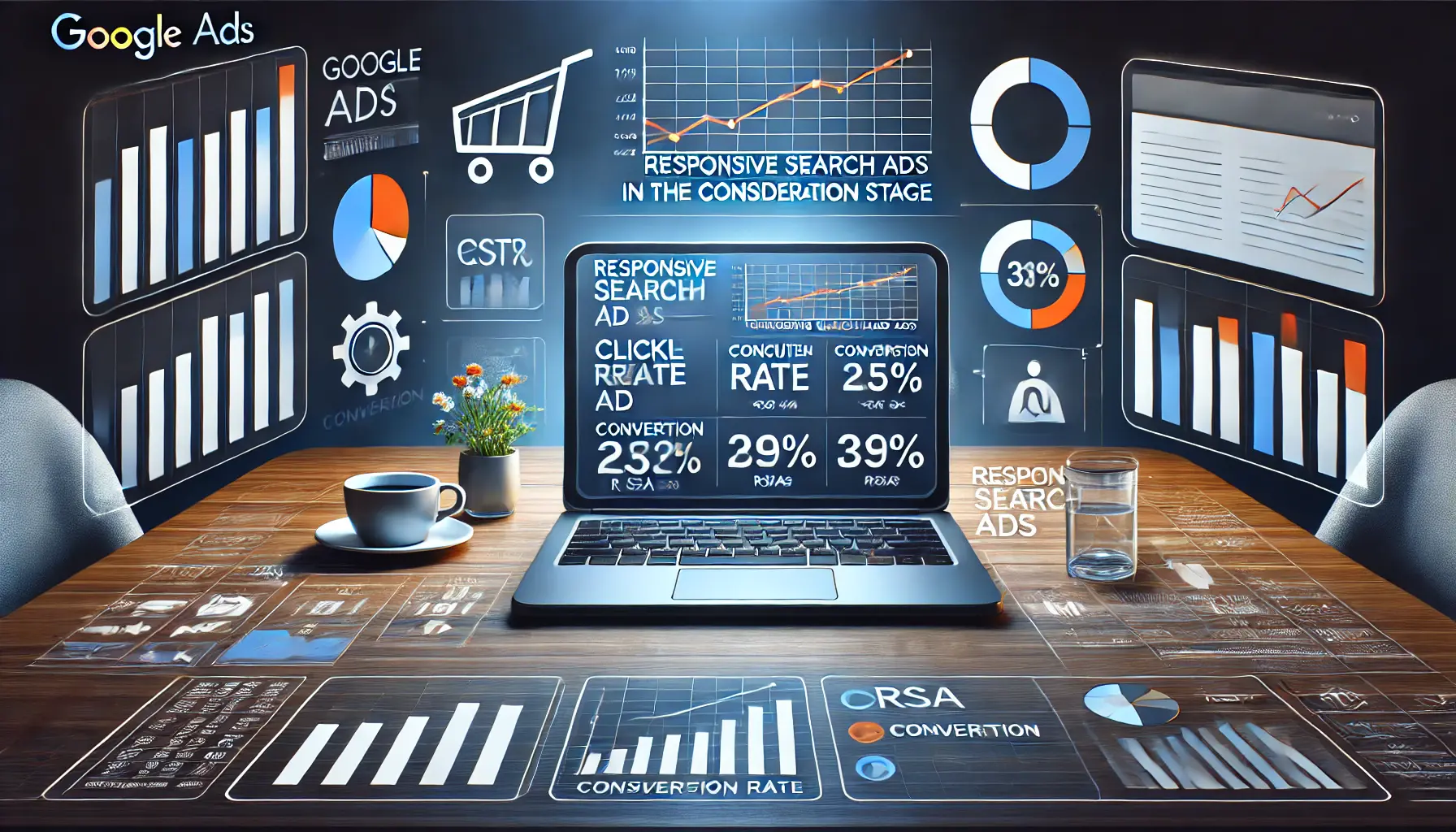
Measuring the Performance of Responsive Search Ads in the Consideration Stage
Measuring the Success of RSAs in the Consideration Stage
To measure the effectiveness of your Responsive Search Ads during the consideration stage, track KPIs such as:
- Click-Through Rate (CTR): A high CTR indicates that your ads are engaging users and encouraging clicks.
- Conversion Rate: Track the percentage of users who complete desired actions, such as form submissions or purchases, after clicking on your ads.
- Ad Strength: Google provides an ‘Ad Strength’ score for RSAs, offering insights on how to optimize ad assets and improve performance.
By enabling Responsive Search Ads in your Google Ads campaigns, you can enhance the consideration stage for potential customers by delivering personalized and relevant messages that guide them toward informed purchase decisions.
Responsive Search Ads adapt to user queries, delivering relevant information that boosts engagement during the consideration stage.
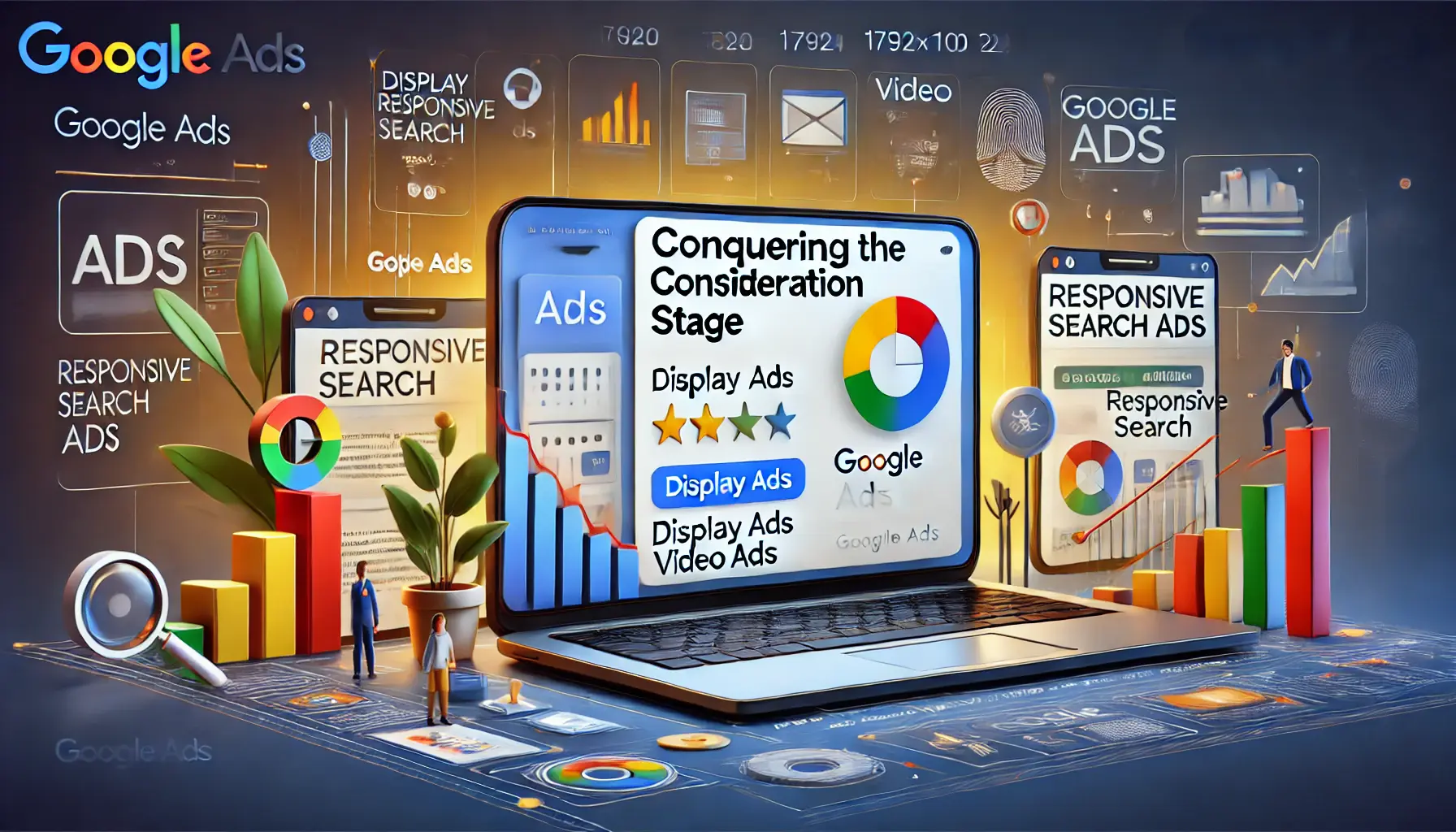
Conquering the Consideration Stage with Google Ads and Optimized Ad Formats
Conquering the Consideration Stage with Google Ads
The consideration stage in Google Ads serves as a pivotal point in guiding prospects toward informed purchase decisions.
By creatively and effectively using ad formats and strategies—such as video ads, display ads, responsive search ads, and remarketing—you can capture the attention of users actively weighing their options and comparing solutions.
Doing so helps you build brand recall, establish your brand as a preferred choice, and ultimately strengthen the chances of conversion.
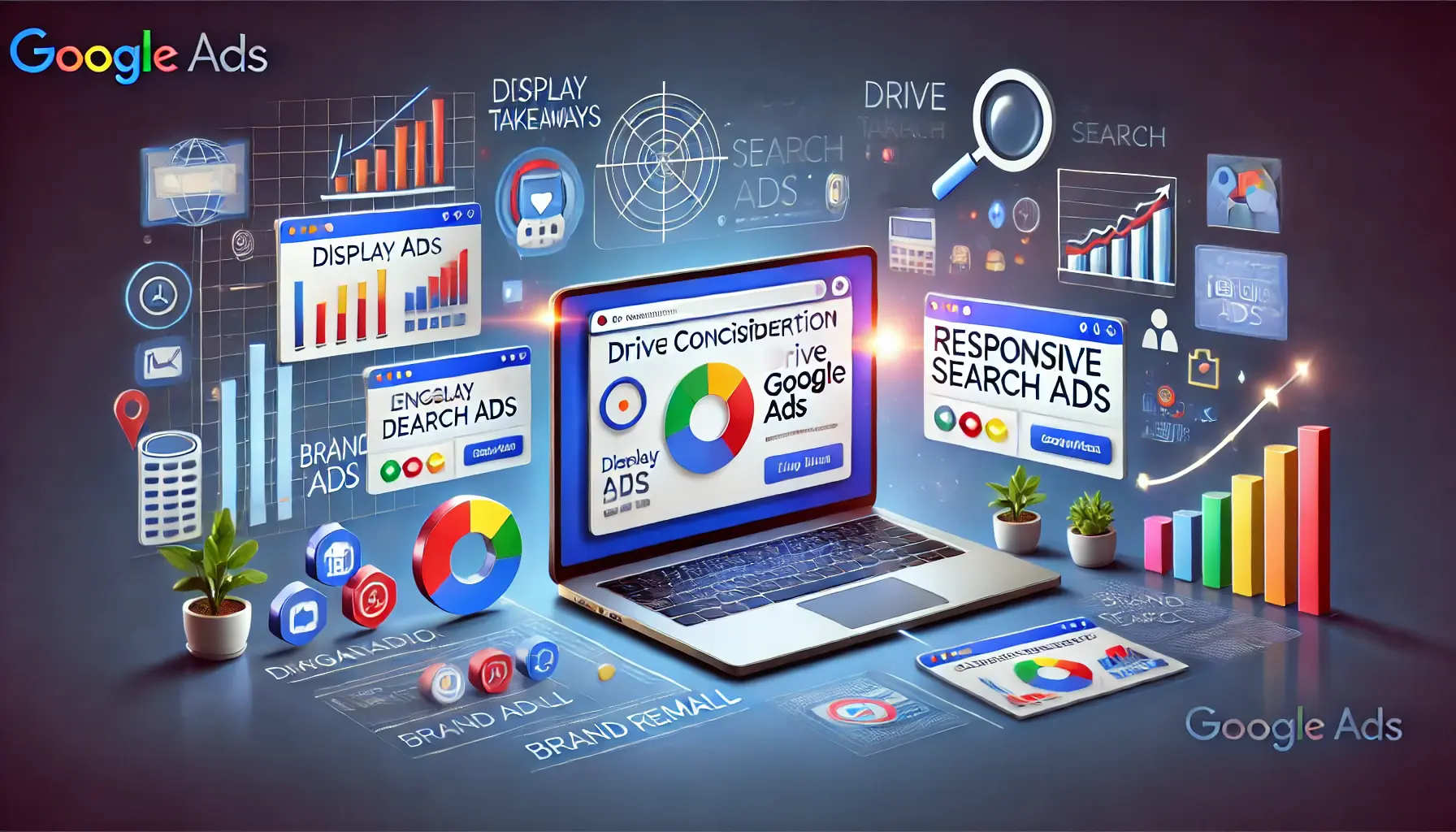
Key Takeaways for Driving Consideration in Google Ads Campaigns
Key Takeaways to Drive Consideration in Google Ads
To maximize the impact of the consideration stage, here are key takeaways to enhance your Google Ads strategy:
- Leverage Video Ads for Captivating Audiences: Video ads effectively communicate the value of your product and build emotional connections, making them particularly powerful in capturing attention during the consideration phase.
- Utilize Remarketing Strategies: Remarketing reconnects with users who previously engaged with your brand, reinforcing brand recall and encouraging them to revisit.
- Maximize Reach with Display Ads: Display ads keep your brand visible across Google’s vast inventory, allowing you to reach prospects as they browse websites, watch videos, or use mobile apps.
- Drive Personalization with Responsive Search Ads: RSAs dynamically adjust to match user queries, boosting ad relevance and engagement, which helps guide prospective buyers in their decision-making process.
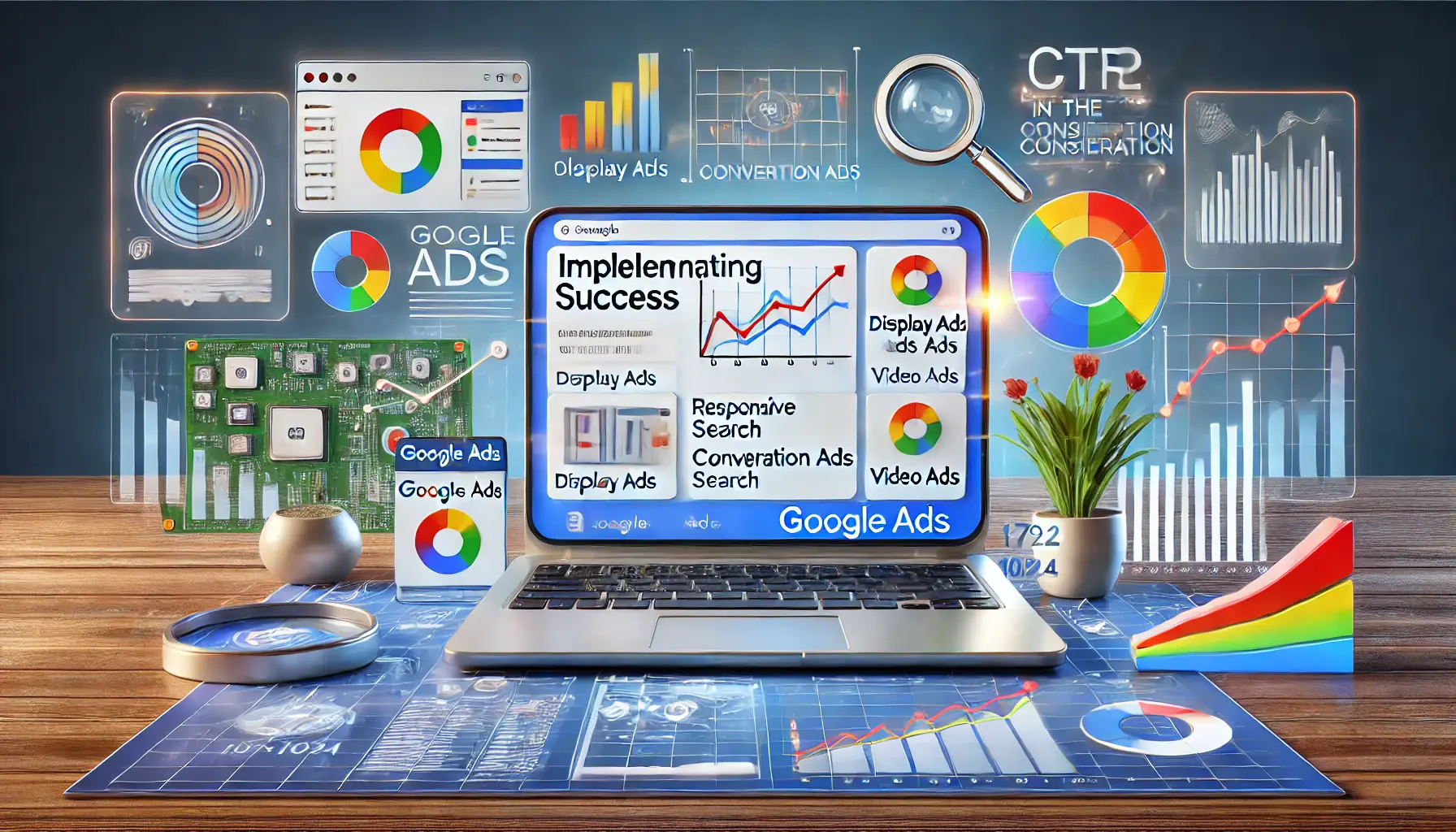
Implementing and Measuring Success in Google Ads During the Consideration Stage
Implementing and Measuring Success in the Consideration Stage
Implementing these tactics requires thoughtful planning and regular tracking of performance metrics.
During the consideration stage, measure the success of your Google Ads campaigns through KPIs such as:
- Click-Through Rate (CTR): A high CTR reflects strong engagement with your audience.
- Conversion Rate: Track the percentage of users completing desired actions, like form submissions or purchases, after engaging with your ads.
- View-Through Conversions: Monitor users who may not click on your ad immediately but later visit your site and convert, showing the ad’s influence in decision-making.
- Ad Strength: Google’s ‘Ad Strength’ score provides insights for optimizing ad assets and improving performance.
For optimal campaign success, continuously analyze performance data to identify which ad formats and targeting strategies work best for your audience.
Regularly refresh ad creative and targeting to maintain relevance and effectiveness.
Utilize Google’s insights and recommendations to fine-tune bids and ad assets for better results.
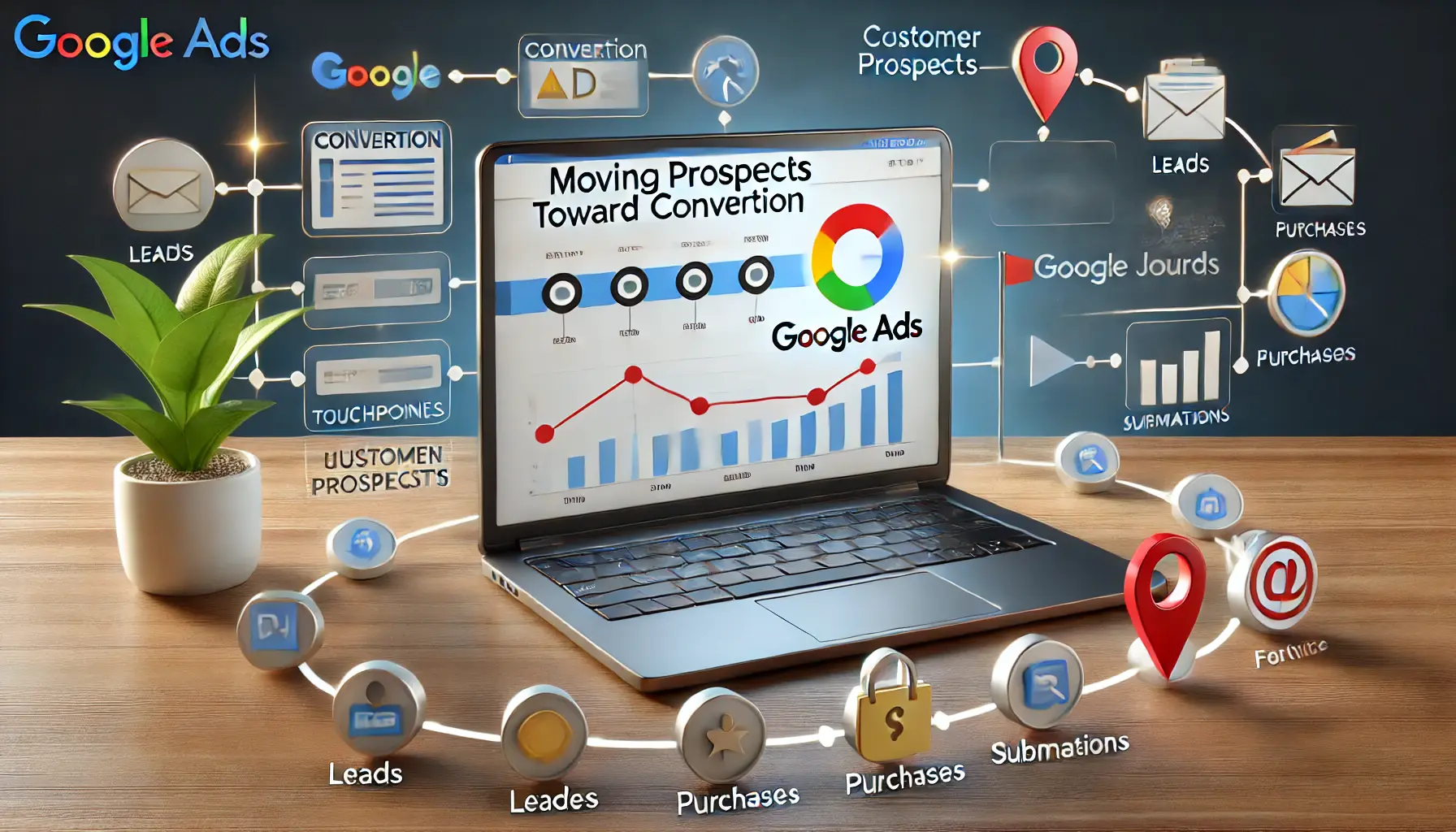
Moving Prospects Toward Conversion with Google Ads
Moving Prospects Toward Conversion
Successfully guiding prospects through the consideration stage is about positioning your brand as a top choice in their minds.
By strategically setting up Google Ads campaigns with video, display, search, and remarketing strategies, you can make a lasting impression and smoothly lead your audience along the path from consideration to conversion.
These strategies not only boost engagement but also build brand loyalty, supporting long-term success in the competitive digital landscape.
By applying these strategies and making continuous refinements, you can turn the consideration stage from a challenge into a growth opportunity, increasing conversions and driving greater brand success.
Effectively guiding prospects through the consideration stage with Google Ads strategies builds brand preference and leads to higher conversions.
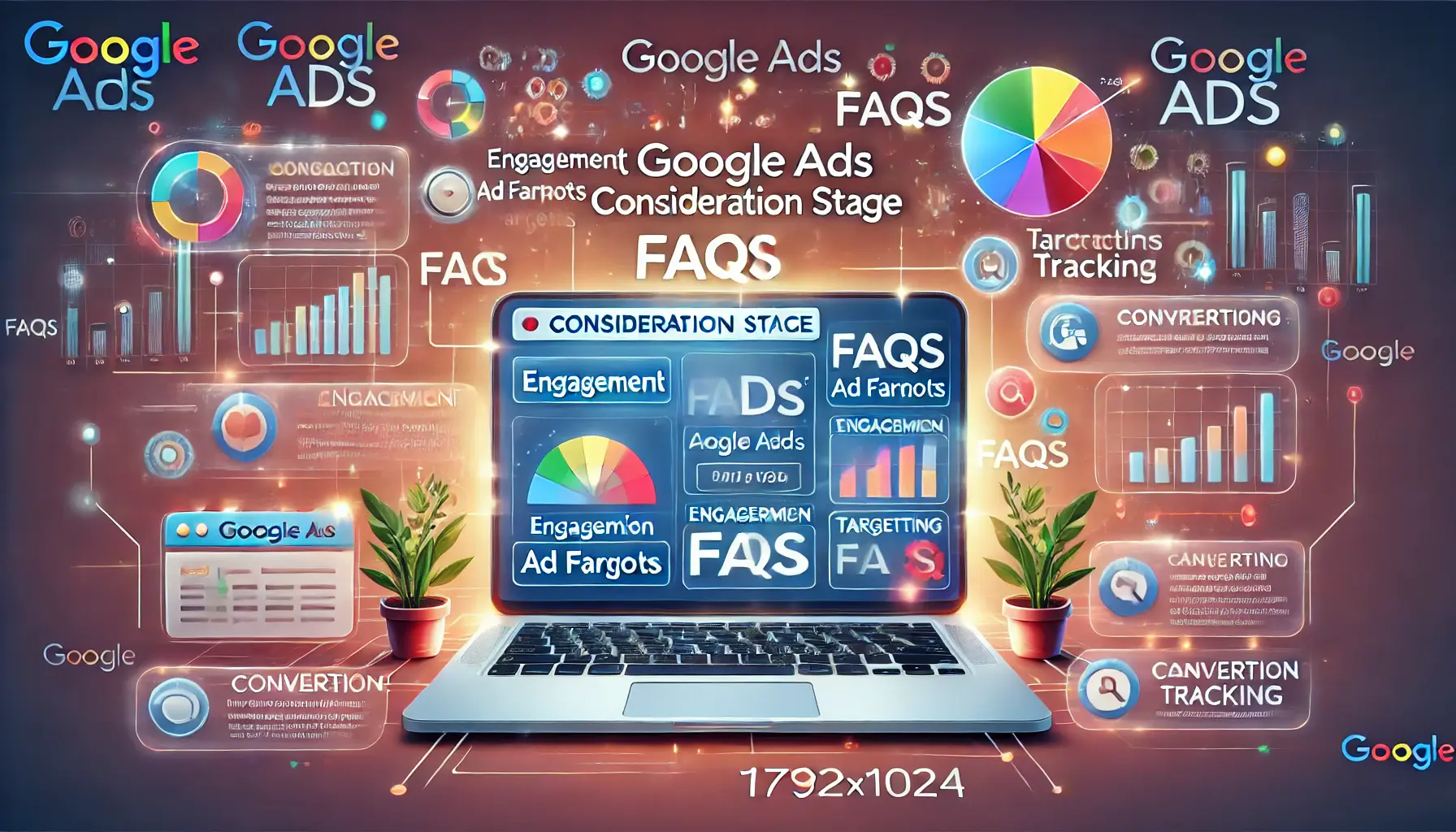
Understanding Google Ads Consideration Stage FAQs and Key Metrics
Your campaigns can be managed by an agency specialized in Google Ads, check out our service page.
Google Ads Consideration Stage FAQs
Getting the most out of the consideration stage in Google Ads requires a solid understanding of this phase.
Below are some commonly asked questions with concise answers to guide you through this stage effectively.
The consideration stage is when potential customers engage in evaluating and comparing various products or services that meet their needs or solve specific problems.
Video ads help customers perceive product value and form emotional connections, capturing attention during this crucial consideration stage.
Remarketing targets users who previously engaged with your brand, reinforcing brand recall and encouraging revisits.
Display ads maintain brand visibility across Google’s network, reaching prospects as they browse websites, watch videos, or use apps.
Responsive Search Ads dynamically adjust to match user queries, boosting ad relevance and engagement during the consideration stage.
Key metrics include Click-Through Rate (CTR), Conversion Rate, View-Through Conversions, and Ad StrengthA Google Ads metric that rates the effectiveness of Responsive Search Ads based on relevance and variety..
Utilize various ad formats, apply remarketing techniques, personalize content, and analyze performance data regularly for the best results.
Proper targeting allows your ads to reach users actively evaluating options, increasing the likelihood of conversion.
In the awareness stage, users recognize a need; in the consideration stage, they actively compare solutions.












